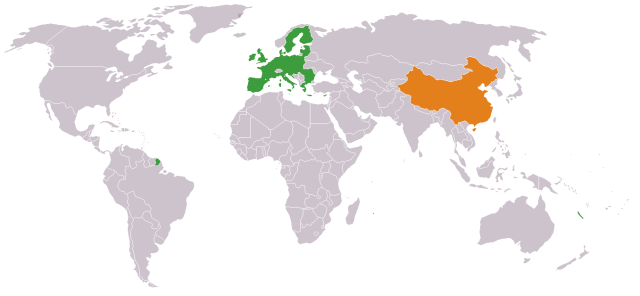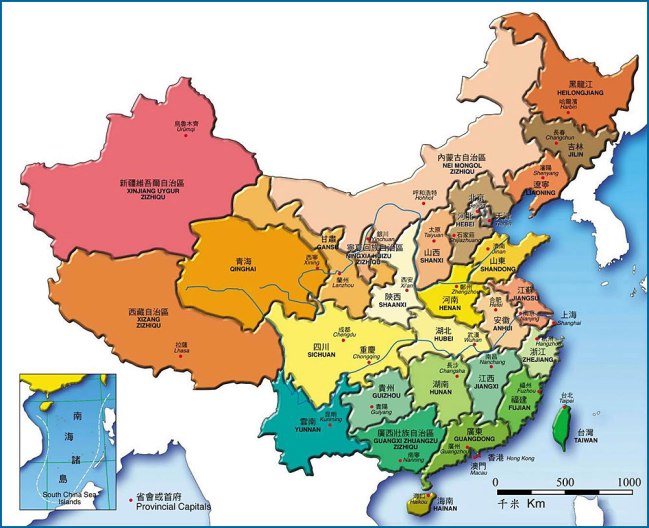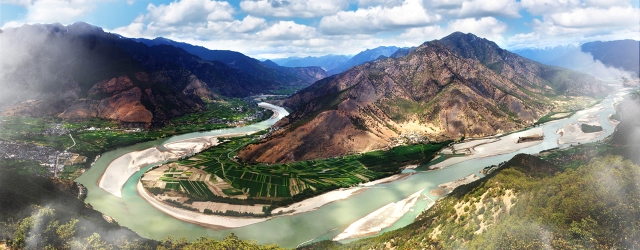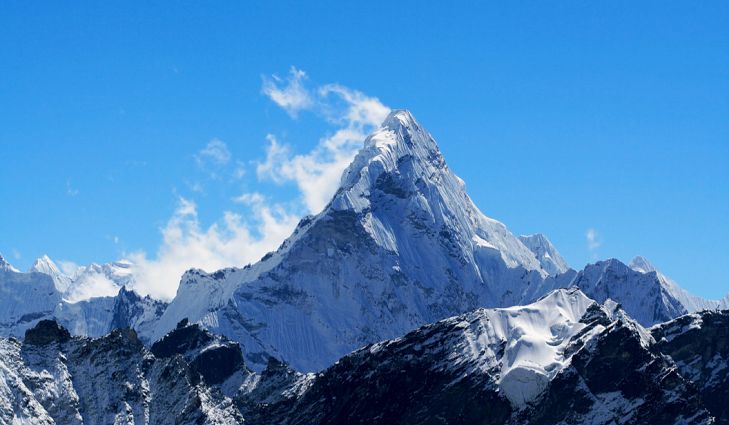An Overview of China’s Geography and Fun Facts About It
When talking about China and Chinese Culture, what will come to your mind first? Its long history, tasty food, or the big cities like Beijing or Shanghai? But, you might have missed the fact that, geographical speaking, China is also one of the largest countries in the world. How large is it? What are some fun facts about China geographic features? This article will introduce some to you!

A geographical overview of China
China has a territorial area of 9.6 million square kilometers and an aquatic territory spanning 4.73 million square kilometers. That’s a lot of abstract numbers! So here are some comparisons to make it more relatable: it’s the third largest country, coming behind Russia and Canada. Its territorial area roughly equals to the total area of Europe excluding Russia.
It’s true that China is a very large country. But it also has a huge population, about 1.4 billion by 2017. This is nearly 19% of the whole population of the world. Therefore, the area per capita is fairly small, only 29% of the world’s average. A huge population can be an asset and a strength in many aspects. But more people also means fewer personal resources. This is why, when it comes to geographical data, China is almost always large in overall numbers, but small in per capita data.
————————————————————————————————–
Read more>> A sea of people: What it’s like taking the Beijing subway?!
————————————————————————————————–

How different regions are divided?
In general, the country can be divided into two areas: the South and the North. A geographical line formed by Qinling Mountain and Huai River is usually seen as the boundary of these two large areas. The climate, landscape, as well as people’s lifestyle varies a lot between the North and the South. However, this doesn’t automatically mean that inside each area there is a great similarity.
That’s part of the reason why there are 34 administrative divisions, including 23 provinces, 5 autonomous regions, four municipalities directly under the central government, and two special administrative regions. The concept of the province is similar to “state” in the US and “county” in the UK. Among the 34 divisions, there are world-renown cities like Beijing, Shanghai (both of which are super metropolis), Xi’an and Henan (famous for their rich cultural heritage). Others are known for their natural landscapes and great views, like Tibet and Yunnan. The largest administrative region of the country is Xinjiang autonomous region, which makes up one-sixth of China’s overall territory. Guangdong province has the largest population, which is more than 1 billion.

Some interesting facts
- China’s terrain is high in the west and low in the east. The average altitude of Tibet is above 4000 meters whereas the altitude of the coastal plain in the southeast can be a few meters high only. This is why the two longest river, Yangtze River and the Yellow River, and many others flow from the west to the east. When people living in east China travel to Tibet, they might have the so-called “Altitude Sickness” because their bodies can’t get acclimated to the change of the height in such a short time.

- As mentioned above, the longest river in China is the Yangtze River, which is 6300 kilometers long. It is the third longest river in the world, after the Nile and the Amazon River. But these two rivers flow through several countries while the whole Yangtze River is within China’s territory. Another important river in China is the Yellow River, which got its name because of the color of the water. The regions along the Yellow River is the cradle of Chinese Civilization. So the river has got another name, River Mother.

- After rivers, we come to the mountains. Mount Everest is the highest mountain in China and also in the world. It is 8,848 meters high and is still gradually rising! The summit of Everest is literally the top of the world and the ultimate dream of all hikers. Beside Everest, there are many other mountains in different regions across China. Some of them are famous for their historic heritage while others have spectacular views!
Well, I hope you now have gotten to know China a little bit better geographically. Compared to a general overview, I believe it will be more interesting to read more about what you find fun so I will write more on this topic in the future!
Get A Free Class in The Next 30 Seconds
Copyright Notice: Everyone is welcome to forward the articles in this blog as long as the links to these articles are also included.

